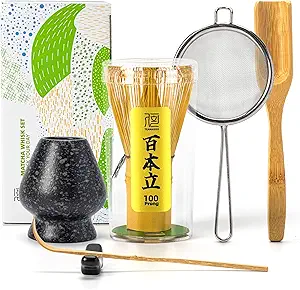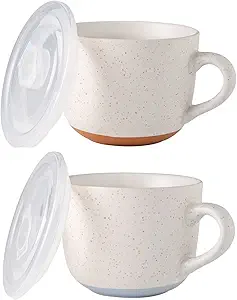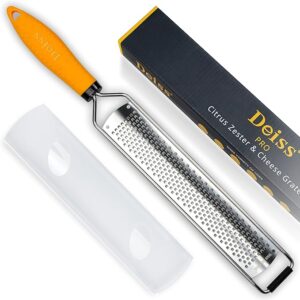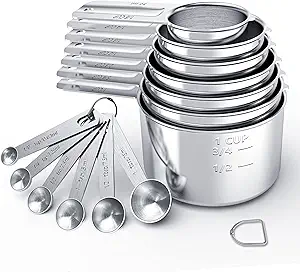If you’ve been curious about the Japanese Mounjaro recipe that’s been making waves online, this is your step-by-step guide. This refreshing drink blends matcha’s earthy notes with the tang of umeboshi plum, the gentle umami of kombu, and a touch of ginger’s warmth. Whether you enjoy it steaming hot or served over ice, it’s a flavorful and unique way to start your morning or perk up your afternoon. With just a handful of ingredients, you’ll have a drink that feels both traditional and trendy and it’s ready in minutes.
For a detox-style tea take on this drink, see the Japanese Mounjaro Detox Drink .
Table of Contents
Why You’ll Love Japanese Mounjaro Recipe
- Quick to prepare: Ready in under 10 minutes from start to sip.
- Rich flavor balance: Earthy, tangy, umami, and a hint of spice.
- Customizable: Make it hot, iced, sweeter, or sharper to fit your taste.
- Nutritious ingredients: Matcha for focus, ginger for warmth, kombu for minerals.
- Conversation starter: A unique drink with a fascinating backstory.
This recipe stands out because it captures the essence of Japanese culinary tradition in a simple drink format. By combining premium matcha, fermented plum, and seaweed, you create a layered flavor profile that most other versions overlook. It’s not just a drink it’s a mindful, sensory experience.
Ingredients Needed For Japanese Mounjaro Recipe
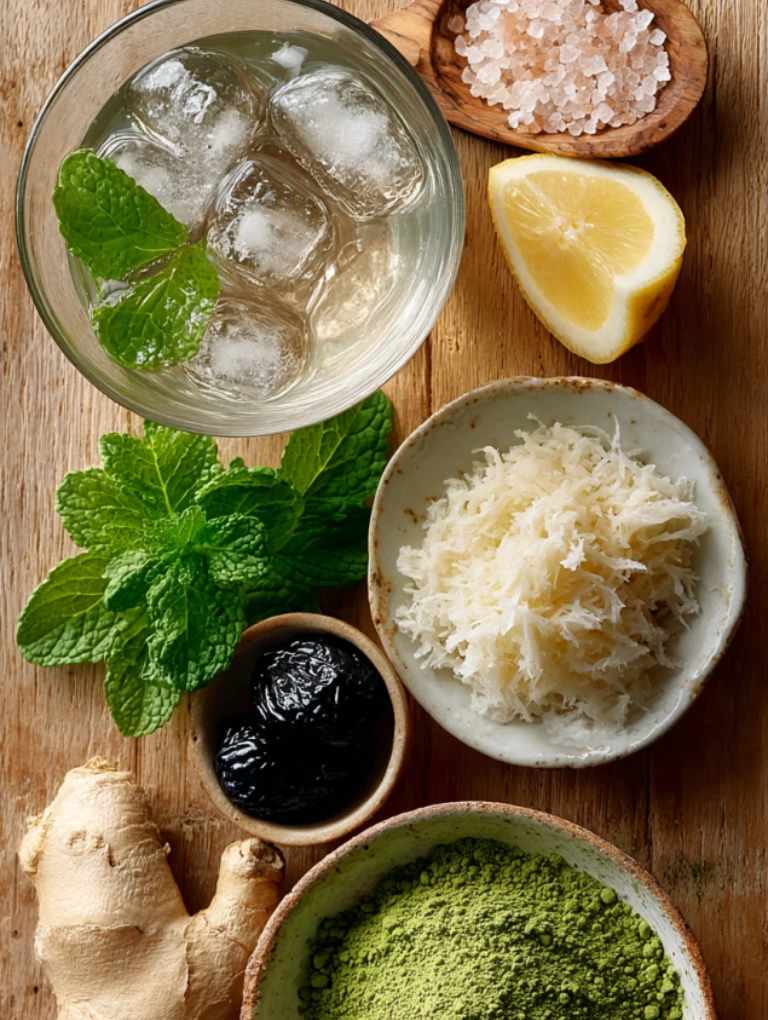
For the Base
- 1 tsp ceremonial-grade matcha green tea powder: Choose high-quality for a smooth, vibrant flavor.
- 1 umeboshi plum (or 1 tsp umeboshi paste): Brings a salty-tart punch.
- 1 tsp freshly grated ginger: Adds a warm, zesty note, and according to the National Center for Complementary and Integrative Health, ginger may help reduce nausea and support digestion.
- 1 small strip kombu (about 2 inches): For subtle umami and trace minerals, including iodine, which the National Institutes of Health states is important for healthy thyroid function.
- 1 cup warm water (around 175°F/80°C): Hotter water can make matcha bitter.
Optional Add-Ins
- 1 tsp raw honey: Natural sweetness that pairs beautifully with matcha.
- Squeeze of lemon or yuzu juice: Brightens the flavor.
- Pink Himalayan salt: A pinch for a mineral boost; the American Heart Association notes it contains small amounts of minerals, though in limited quantities.
- Fresh mint leaves: For a cooling finish.
- Ice: If making the iced version.
Prefer a simpler green-tea version without umeboshi or kombu? Try the Natural Mounjaro Recipe With Green Tea.
Notes & Substitutions
- Matcha: You can use culinary-grade matcha for a stronger, more robust taste if you prefer it in lattes or cooking.
- Umeboshi: If unavailable, umeboshi vinegar offers a similar tart-salty profile. Reduce the amount slightly to avoid overpowering the drink.
- Kombu: Swap with wakame for a lighter seaweed flavor, or omit if you’re not a fan of seaweed though you’ll lose some depth.
- Ginger: Powdered ginger works in a pinch, but fresh delivers more aroma.
- Sweetener: Maple syrup or agave can replace honey for vegan diets.
How to Make Japanese Mounjaro Recipe
Before You Start
- Rinse the kombu under cold water to remove surface salt.
- Heat your water to around 175°F/80°C. Avoid boiling to preserve matcha’s delicate flavor.
- Grate ginger finely for even flavor release.
Step-by-Step Method
- Prepare Kombu Water
- Place the kombu strip in a heatproof cup or small saucepan. Pour over the warm water and let it steep for 5 minutes.
- This infuses the water with subtle umami. Remove and discard (or reuse) the kombu.
- Whisk the Matcha
- In a small bowl, combine matcha powder with 2 tablespoons of the kombu water.
- Whisk vigorously using a bamboo whisk (chasen) or a small electric frother until smooth and frothy. This prevents clumps.
- Incorporate Ginger and Umeboshi
- Add the grated ginger and the umeboshi plum (pit removed) or paste to the matcha mixture. Mash and stir until well combined.
- Combine Everything
- Pour the matcha-umeboshi-ginger blend into the remaining kombu water. Stir well.
- Taste and adjust: add honey for sweetness or lemon for brightness.
- Serve
- Enjoy hot, or pour over ice for a chilled version. Sip slowly to savor the complex flavors.
Iced Version
- Prepare as above, but use only half the water when whisking the matcha mixture.
- Pour over a glass filled with ice, then top with chilled filtered water for balance.
- Garnish with a sprig of mint or a thin lemon slice.
For a side-by-side comparison of Japanese and Brazilian styles, see the Mounjaro Weight Loss Drink Recipe Brazilian & Japanese Versions.
Pro Tips & Troubleshooting
Expert Tips
- Prevent bitterness: Keep water below boiling and use fresh matcha.
- Layer the flavors: Steeping kombu first makes the drink smoother.
- Smoother texture: Sift matcha before whisking to avoid lumps.
Common Mistakes to Avoid
- Oversteeping kombu – More than 10 minutes can make it too briny.
- Skipping the whisking step – This results in clumps and uneven flavor.
- Too much umeboshi – A little goes a long way; start small and adjust.
Shortcut
- Pre-mix matcha, powdered ginger, and umeboshi powder (if available) for a quick travel-friendly version just add warm water.
Serving, Storage & Variations
Serving Ideas
- Serve hot in a small tea bowl for a mindful tea moment.
- Pair with a light snack like rice crackers or steamed edamame.
Storage
- Hot version: Best enjoyed fresh.
- Iced version: Store in the fridge for up to 24 hours; stir before drinking.
Variations
- Caffeine-Free: Swap matcha for roasted barley tea (mugicha) or herbal tea.
- Extra Citrus: Add more lemon or yuzu for a sharper profile.
- Detox Twist: Include a pinch of pink salt for electrolyte support.
Nutritional Information (per serving, estimated)
| Nutrient | Amount |
|---|---|
| Calories | 15 |
| Protein | 0.6 g |
| Total Fat | 0 g |
| Carbohydrates | 3 g |
| Sugars | 1 g |
| Fiber | 0.5 g |
| Caffeine | ~35 mg |
| Sodium | 120 mg |
| Iodine | trace |
One serving contains roughly 35 mg of caffeine, as reported by the National Center for Complementary and Integrative Health, which also notes that green tea provides L-theanine for a calming yet alert state.
Conclusion
This Japanese Mounjaro recipe blends traditional Japanese ingredients into a drink that’s as intriguing as it is enjoyable. Its balance of earthy, tangy, and savory flavors makes it stand out from ordinary teas. Whether you choose the soothing hot version or a crisp iced twist, it’s quick to prepare, customizable, and full of character.
If you try this recipe, leave a comment and star rating below and share your own variation. Did you add more citrus? Skip the kombu? We’d love to know.
Frequently Asked Questions
Is Japanese Mounjaro the same as the Mounjaro medication?
No. This is a food-based drink with no medical properties related to the prescription drug Mounjaro.
Can I make this without matcha or with decaf green tea?
Yes. You can substitute with decaf green tea or roasted barley tea for a caffeine-free option.
What can I use if I cannot find umeboshi paste?
Umeboshi vinegar is the closest match. Use less than the paste to keep the flavor balanced.
Do I need kombu, or can I skip seaweed entirely?
You can skip it, but you’ll lose some umami depth. Wakame is a milder alternative.
How much caffeine is in one serving, and when should I drink it?
One serving contains roughly 35 mg of caffeine. Morning or early afternoon is best to avoid disrupting sleep.
Does Japanese Mounjaro help with weight loss?
There’s no scientific proof it directly causes weight loss. It can be part of a balanced diet if you enjoy it.
How long does the drink keep in the fridge, and can I make a concentrate?
The iced version keeps up to 24 hours refrigerated. You can make a concentrate and dilute with water or ice before serving.


